CFRN Cardiac practice test
Document Content and Description Below
CFRN Cardiac practice test Vasopressors - ans-Low beta properties Inhibits NO (methylene blue) Profound neurogenic shock Push dose pressors Vasogenic shock Refractory septic shock Phen... ylephrine - ans-Pure alpha - increased BP without tachycardia Causes increased aortic root pressure and CPP Vasogenic shock with tachycardia , sepsis, neurogenic shock 10-100mcg/min load with drip rate 40-60mcg/min Can cause reflexive bradycardia Vasopressin - ans-Used for refractory shock when high doses of catecholamines are present Releases catecholamine receptors 0.01-0.04u/min Methylene blue - ans-Inhibits NO - causing vasoconstriction Vasodilatory shock, septic shock 0.4-2mg/kg over 20min-1hour Hydralazine - ans-Direct arterial vasodilator reducing afterload HTN 5-10mg q 20 minutes Drops both SBP/DBP Nitroglycerin - ans-Dilates venous system reducing preload Dilates arterial system in high doses Relieves vasospasm Angina MI LVF Coronary artery spasm 0.4mg SL q5 min 5mcg/min -200mcg/min titrated q3-5 minutes by 5-20mcg/min Nitroprusside - ans-Relaxes vascular smooth muscle Dilates arterial and venous reducing after and preload HTN w/ serious complications LVF Cardiogenic Shock Aortic dissection Watch for cyanide toxicity 0.5 - 10mcg/kg/min titrated q 5minutes Heparin - ans-Accelerates formation of antithrombin III inactivating thrombin and preventing conversion of fibrinogen to fibrin Blood clots Caution in recent major surgery, ulcer, GIB, renal dysfunction 60-80u/kg bolus (max 5000u) 15-18u/kg/hr (max 1000u/hr) Aggrastat - ans-IV glycoprotein IIB/IIIA platelet inhibitor ACS/MI Active bleeding, recent surgery Load - 0.4mcg/kg/min over 30 minutes Maintenance - 0.1mcg/kg/min over 12 hours t-PA - ans-ischemic stroke: 0.9mg/kg (max 90mg) First 10% over 1 minute Remaining 90% over hour STEMI <67kg 15mg bolus over 1-2 minute 0.75mg/kg over 30 minutes 0.5mg/kg over next 60 minutes (max 35mg) max total dose 100mg >67mg 15mg over 1-2 minutes 50mg over 30 minutes 35mg over next 60 hours PE 100mg over 2 hours Followed by heparin infusion Class 2 antidysrhythmics - ANS-This class of antidysrhythmics includes beta blockers like carvedilol, labetalol, propanolol (causes bronchoconstriction), timolol, esmolol, metoprolol. These medications bind to the beta-adrenoreceptor blocking the binding of norepinephrine and epinephrine which inhibits sympathetic effects. Cardiac index - ANS-normal: 2.5 - 5 L/min Pulmonary vascular resistance (PVR) - ANS-measures afterload of the RIGHT heart Normal: 50-250 dynes Increase in PVR - ANS-caused by acidosis, hypercapnia, hypoxia, actelectasis, ARDS Decrease in PVR - ANS-caused by alkalosis, hypocapnia, vasodilating drugs Systemic vascular resistance (SVR) - ANS-Normal: 800-1200 dynes Increase in SVR - ANS-Can be caused by vasoconstriction due to hypothermia, decreased cardiac output, hypovolemic shock, aftermath of pressors Decrease in SVR - ANS-Can be caused by vasodilation due to anaphylaxis, neurogenic shock or septic shock, vasodilating drugs like nitroprusside, nitroglycerine, hydralazine. Heart sounds - ANS-Due to valves opening and closing. *"Toilet paper my arse" - tricuspid, pulmonic, mitral, aortic S3 - ANS-"Ken-tuck- ee" Heart sound that can be due to fluid overload. Usually occurs due to overfilling of the left ventricle, CHF, choridae tendonae dysfunction S4 - ANS-"Tenn-ee-ssee" Usually due to a weak left ventricle, cardiomyopathy, hypertension or infarction (MI). You would expect to hear this heart tone from a patient with a history of an old MI How do you treat hyperkalemia? - ANS-IV insulin, D50, Kayexelate * if your monitor is double counting your QRS or T waves it may indicate hyperkalemia and you may need to administer calcium [Show More]
Last updated: 1 year ago
Preview 1 out of 28 pages
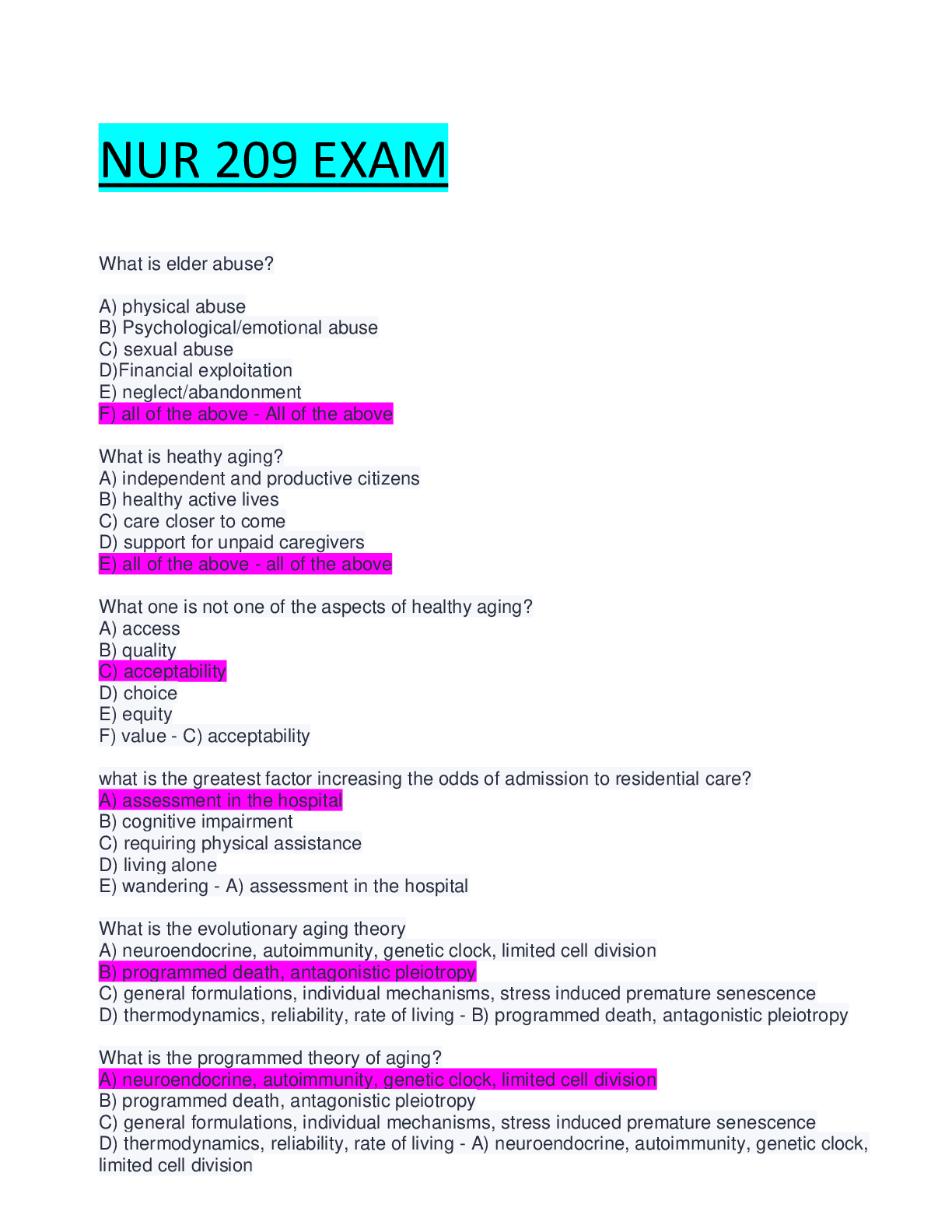
Buy this document to get the full access instantly
Instant Download Access after purchase
Buy NowInstant download
We Accept:

Reviews( 0 )
$14.00
Can't find what you want? Try our AI powered Search
Document information
Connected school, study & course
About the document
Uploaded On
Mar 14, 2024
Number of pages
28
Written in
Additional information
This document has been written for:
Uploaded
Mar 14, 2024
Downloads
0
Views
11




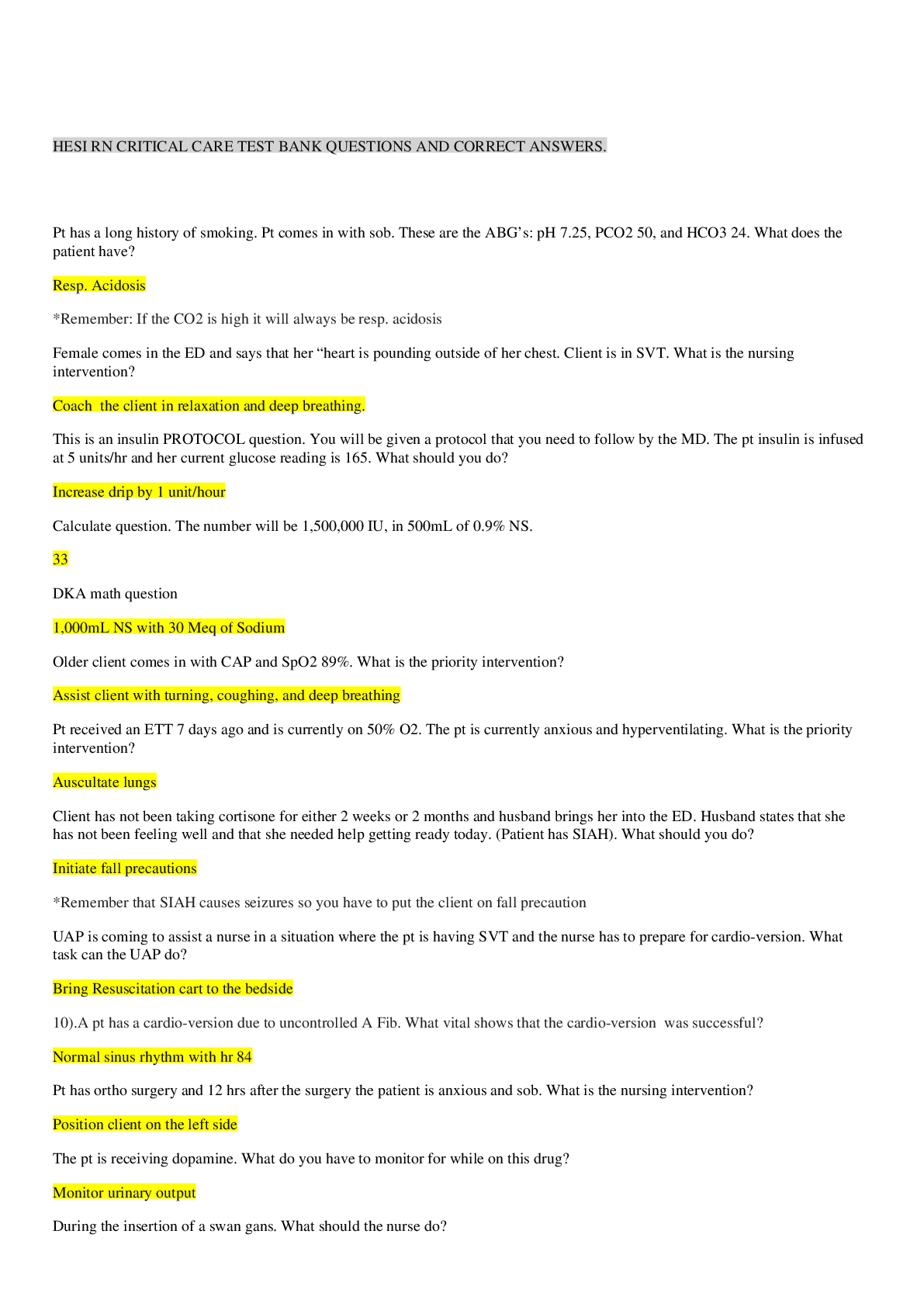
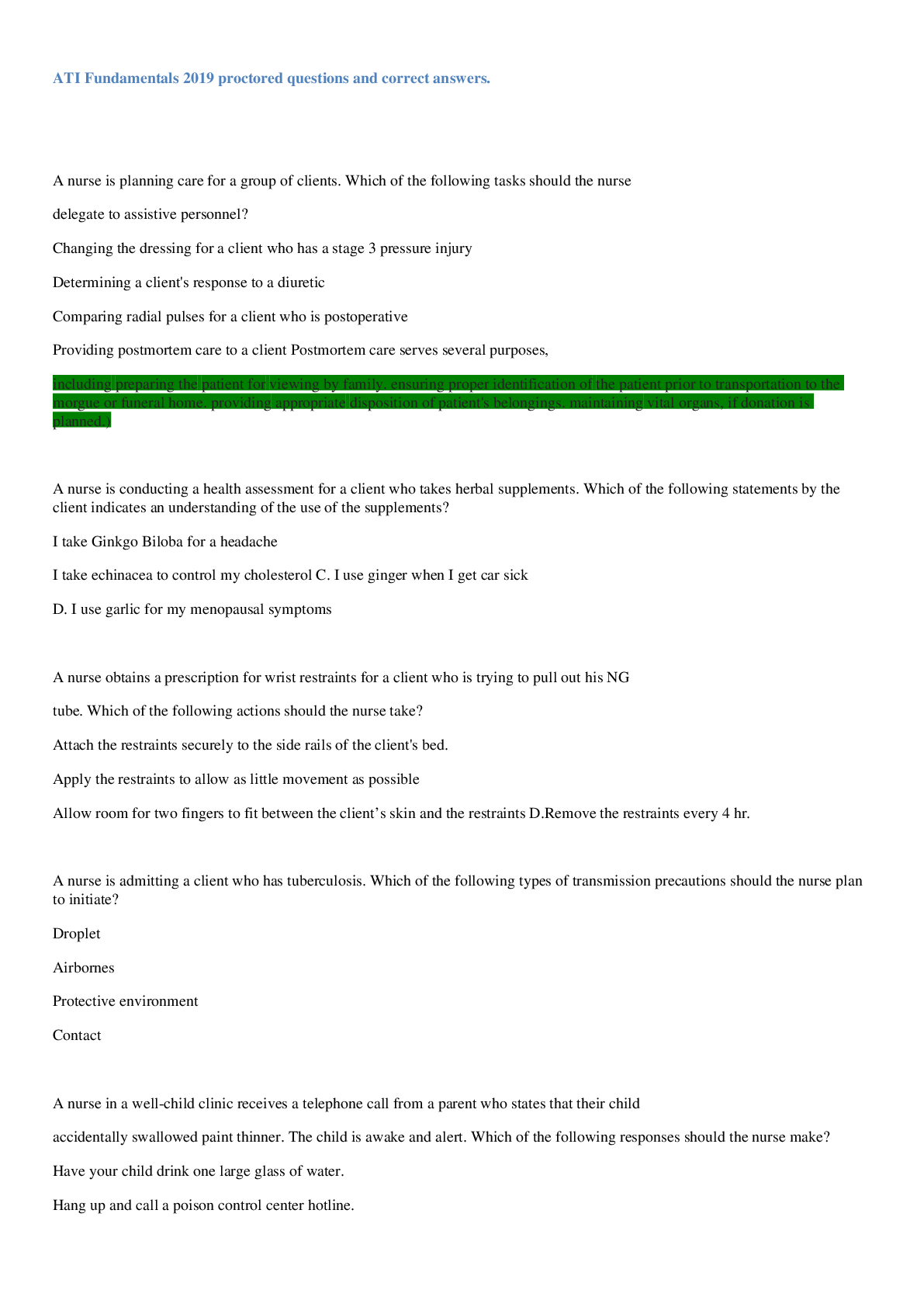
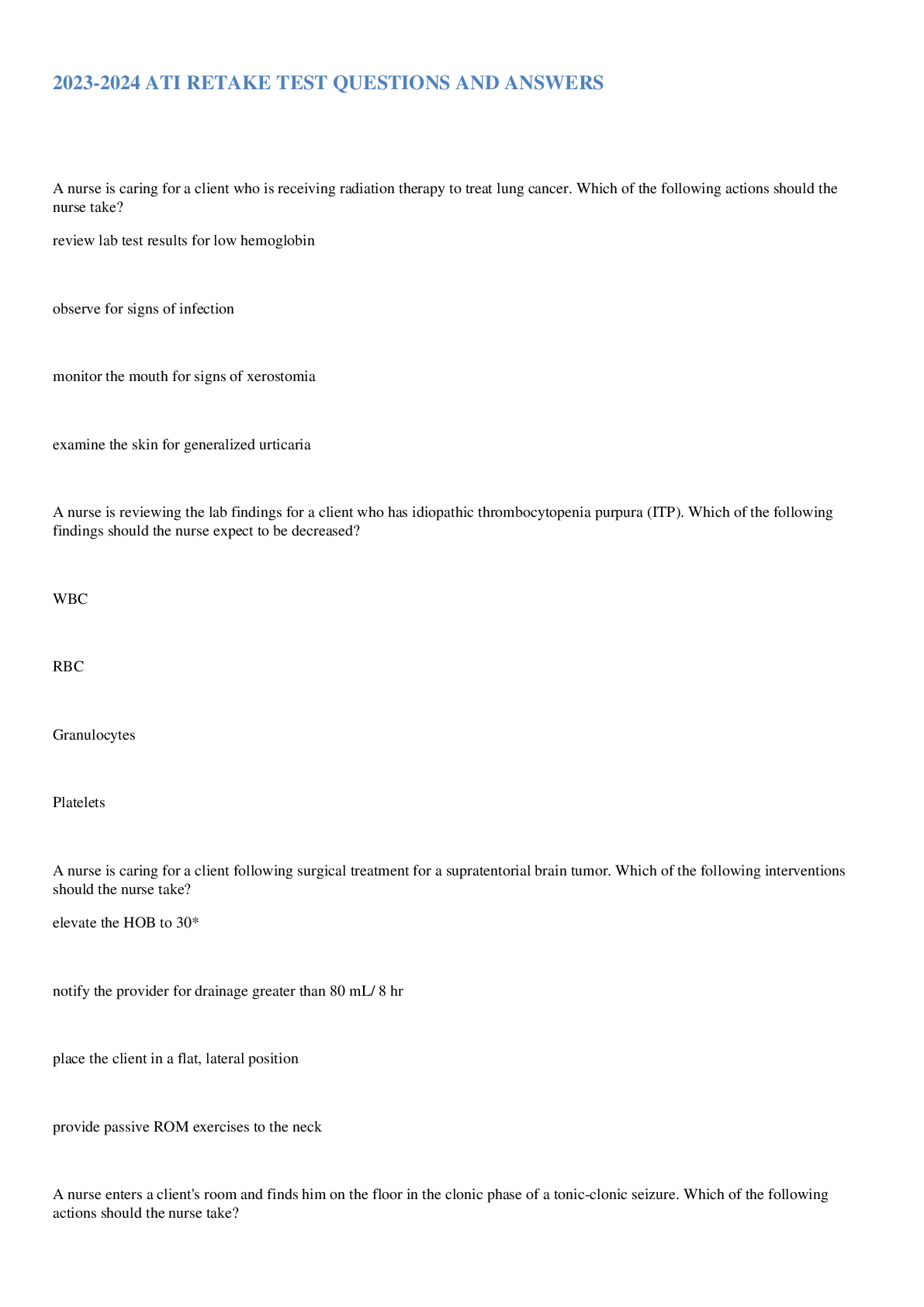
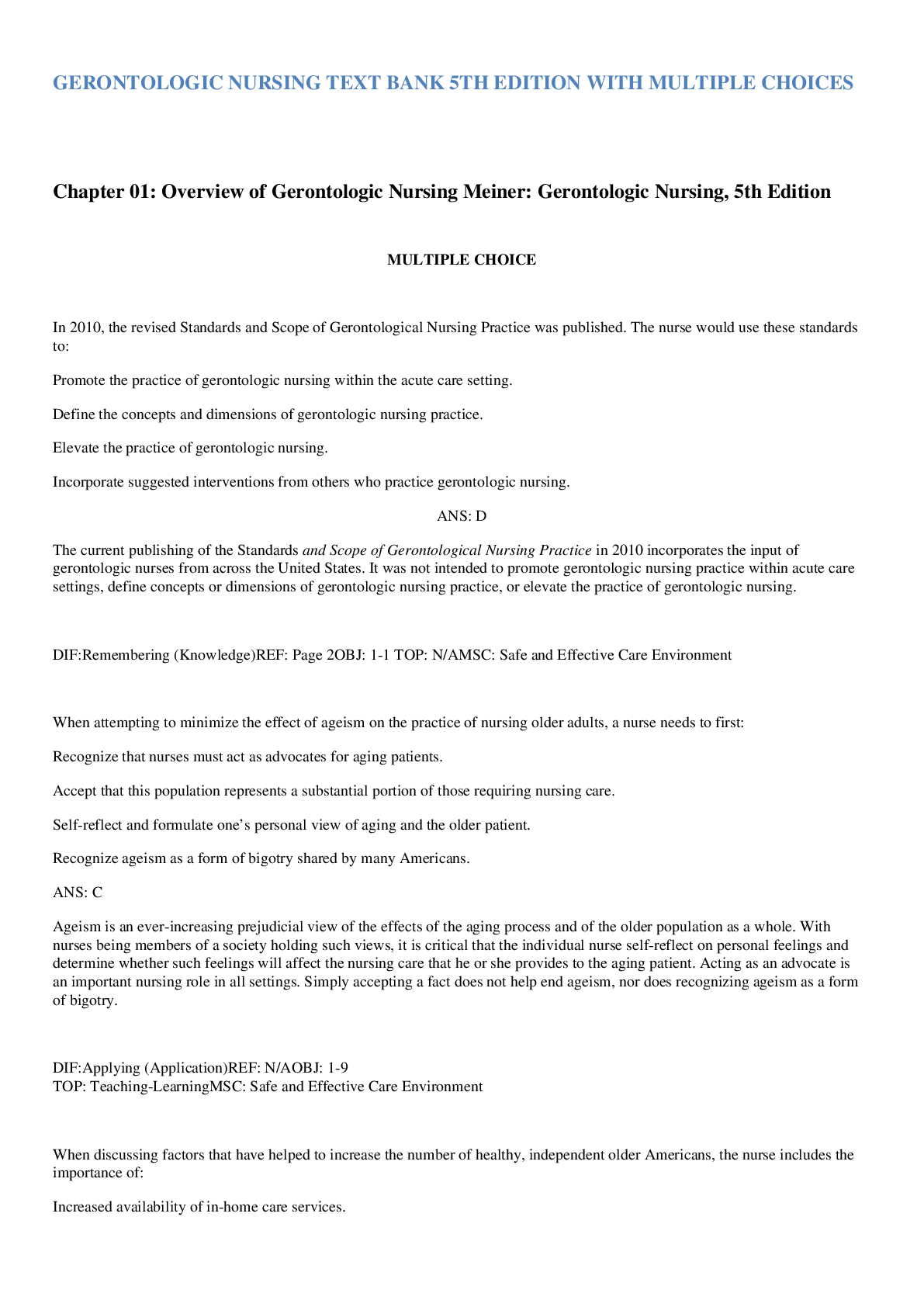
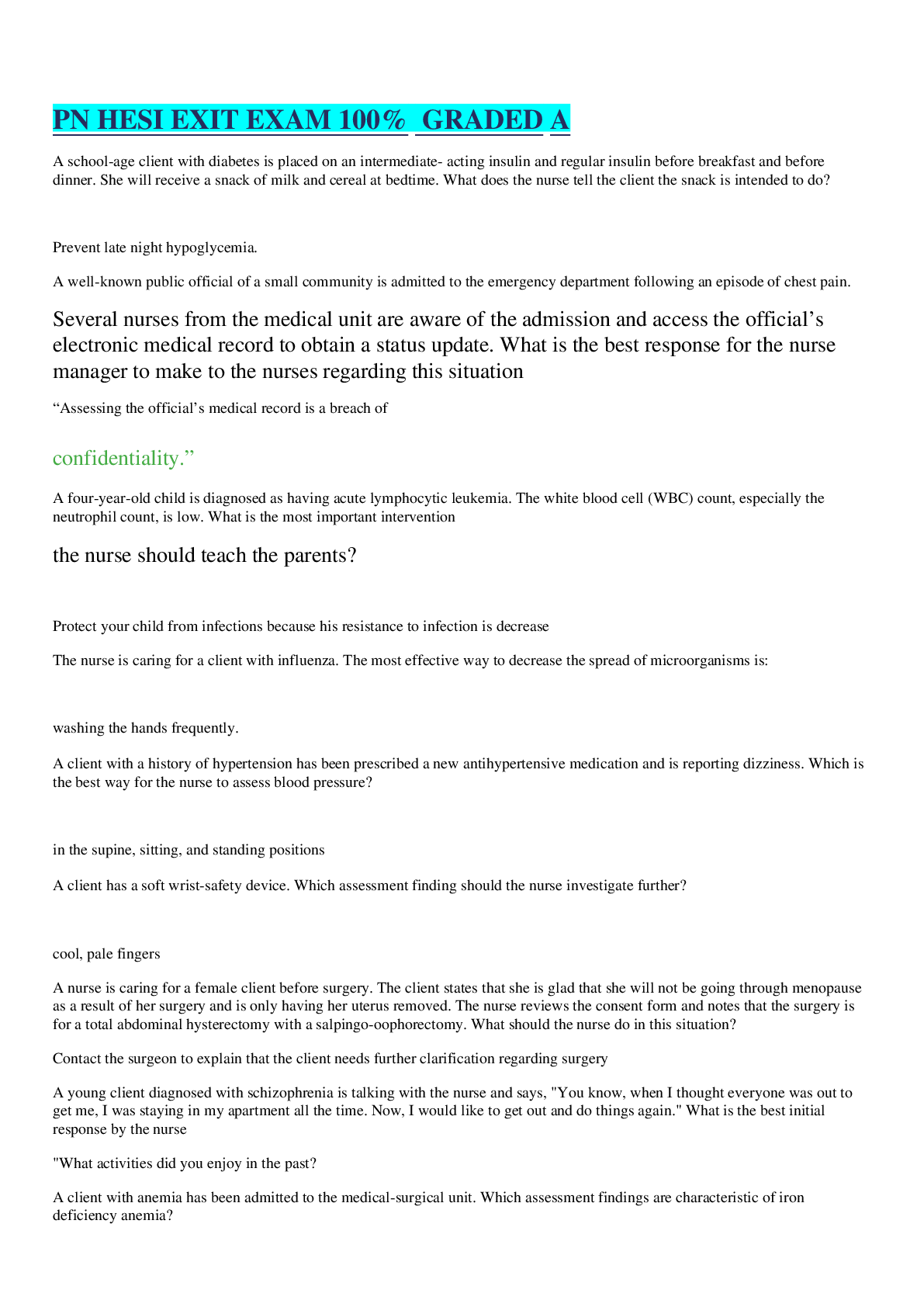
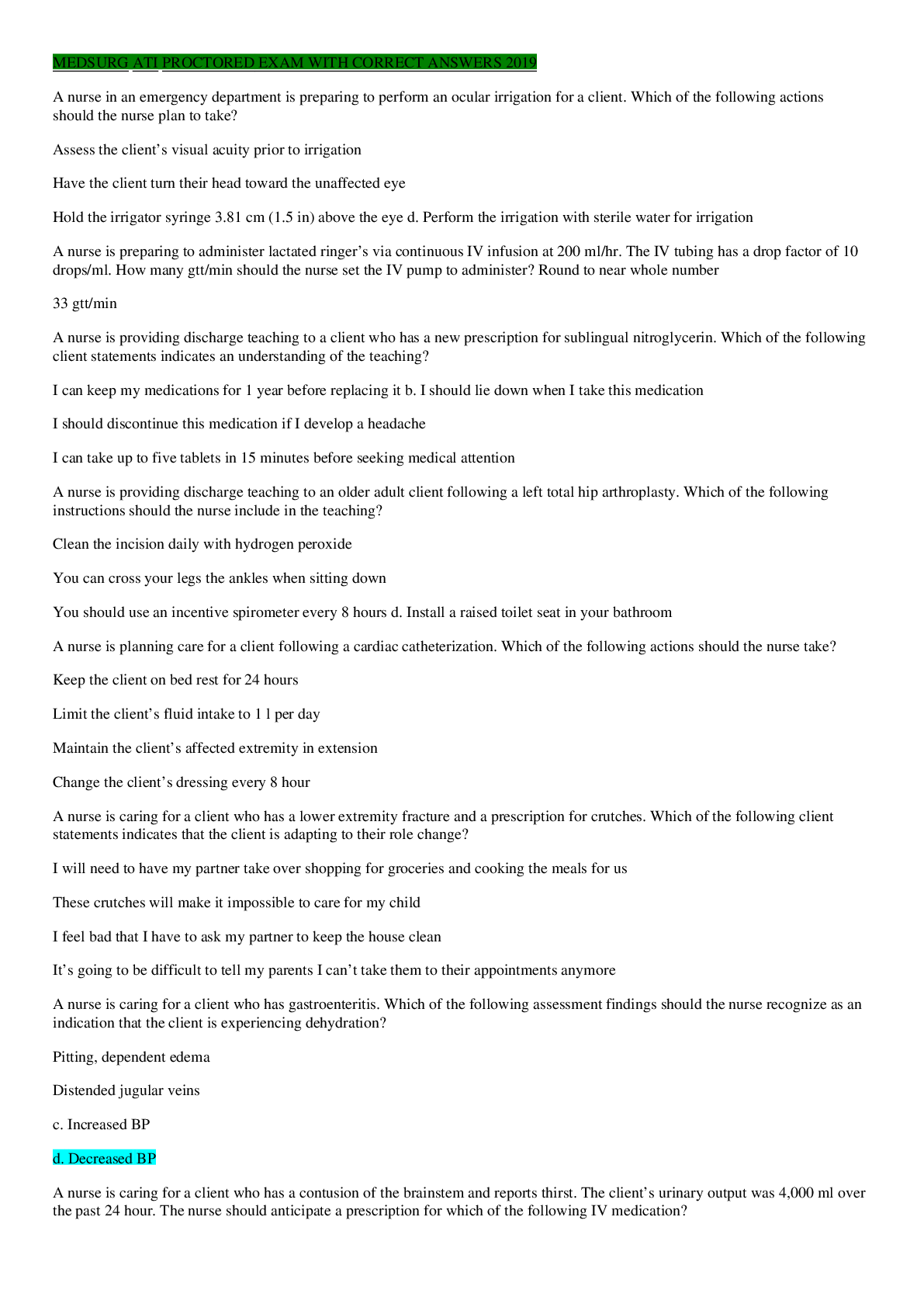
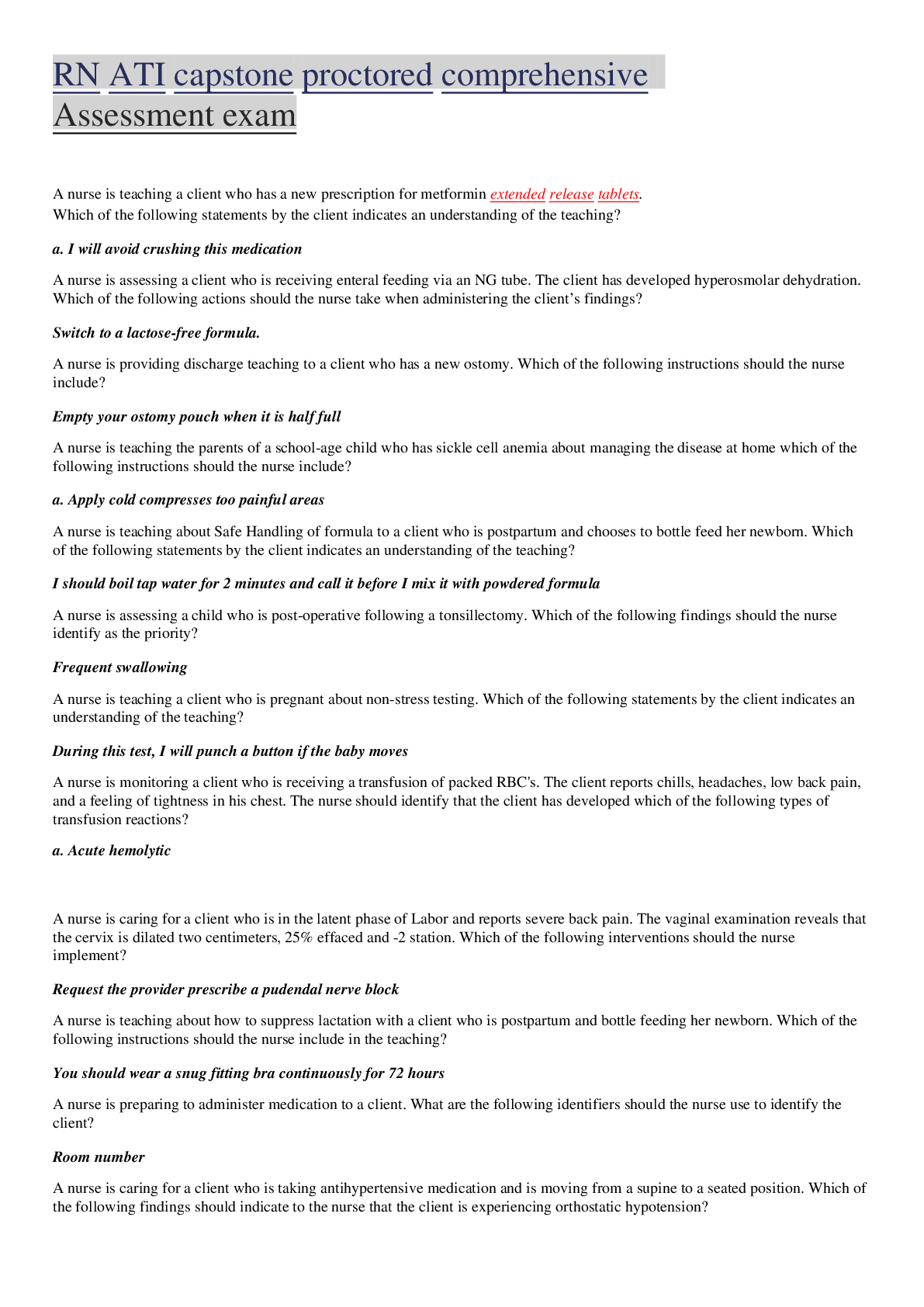
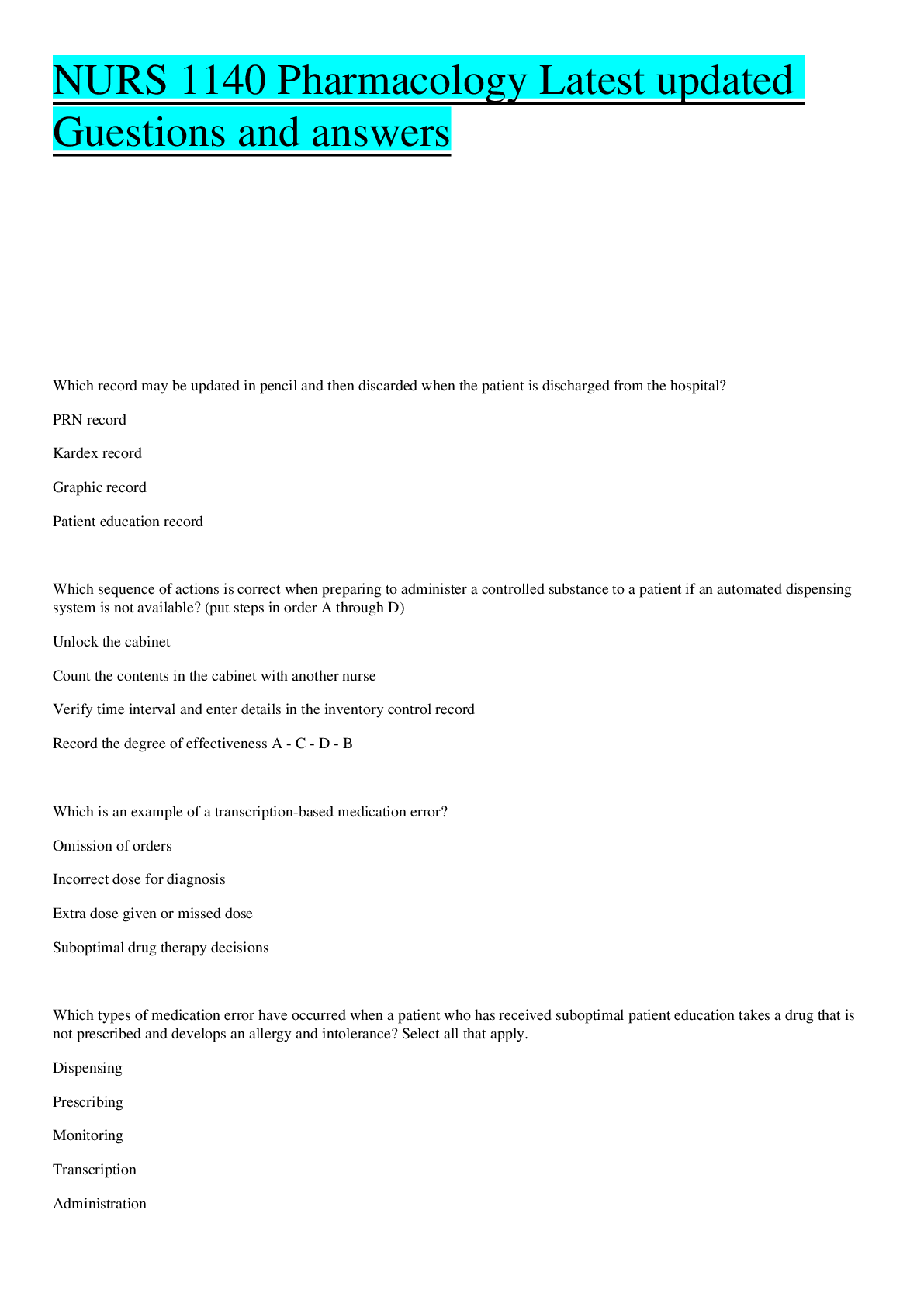
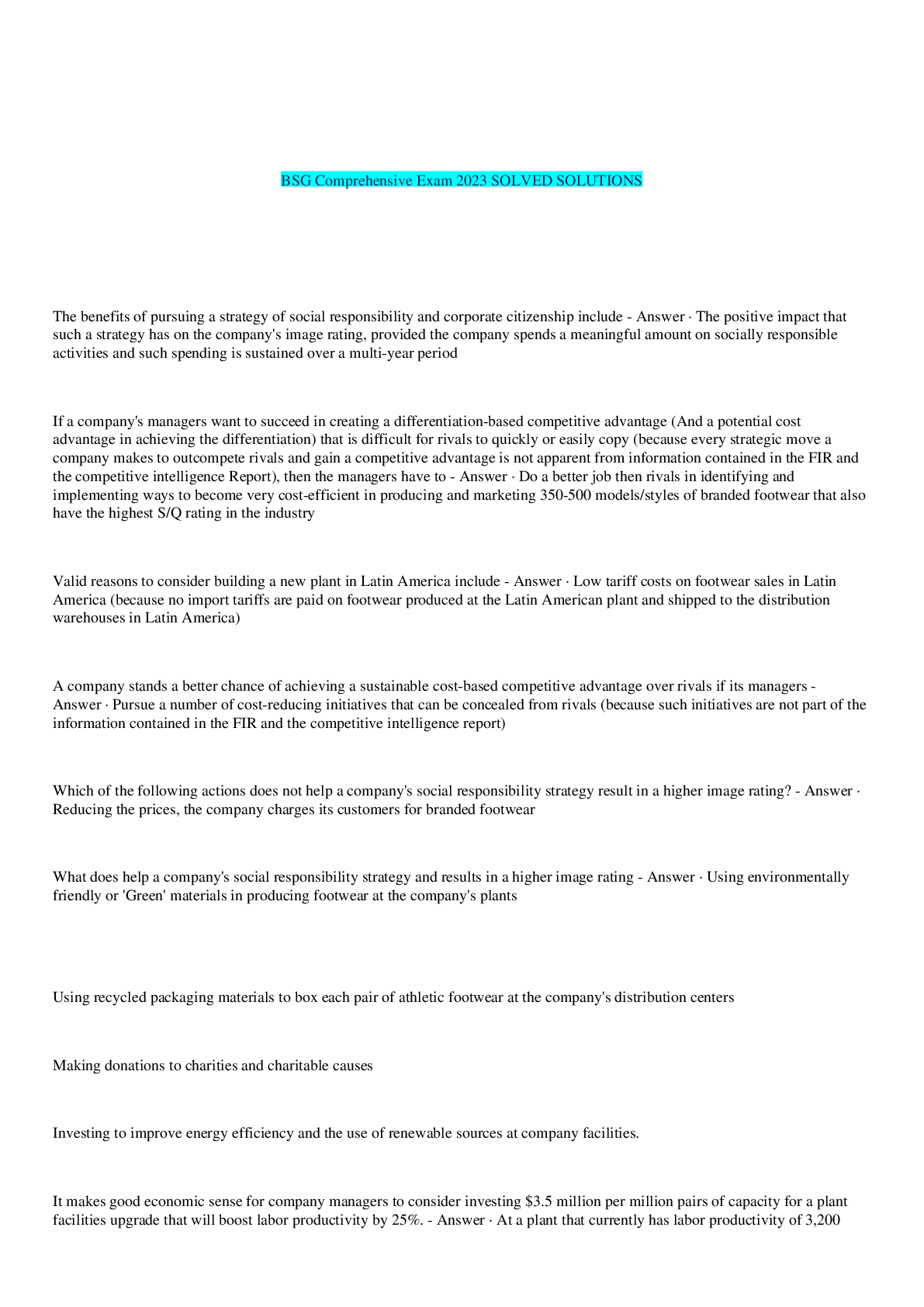



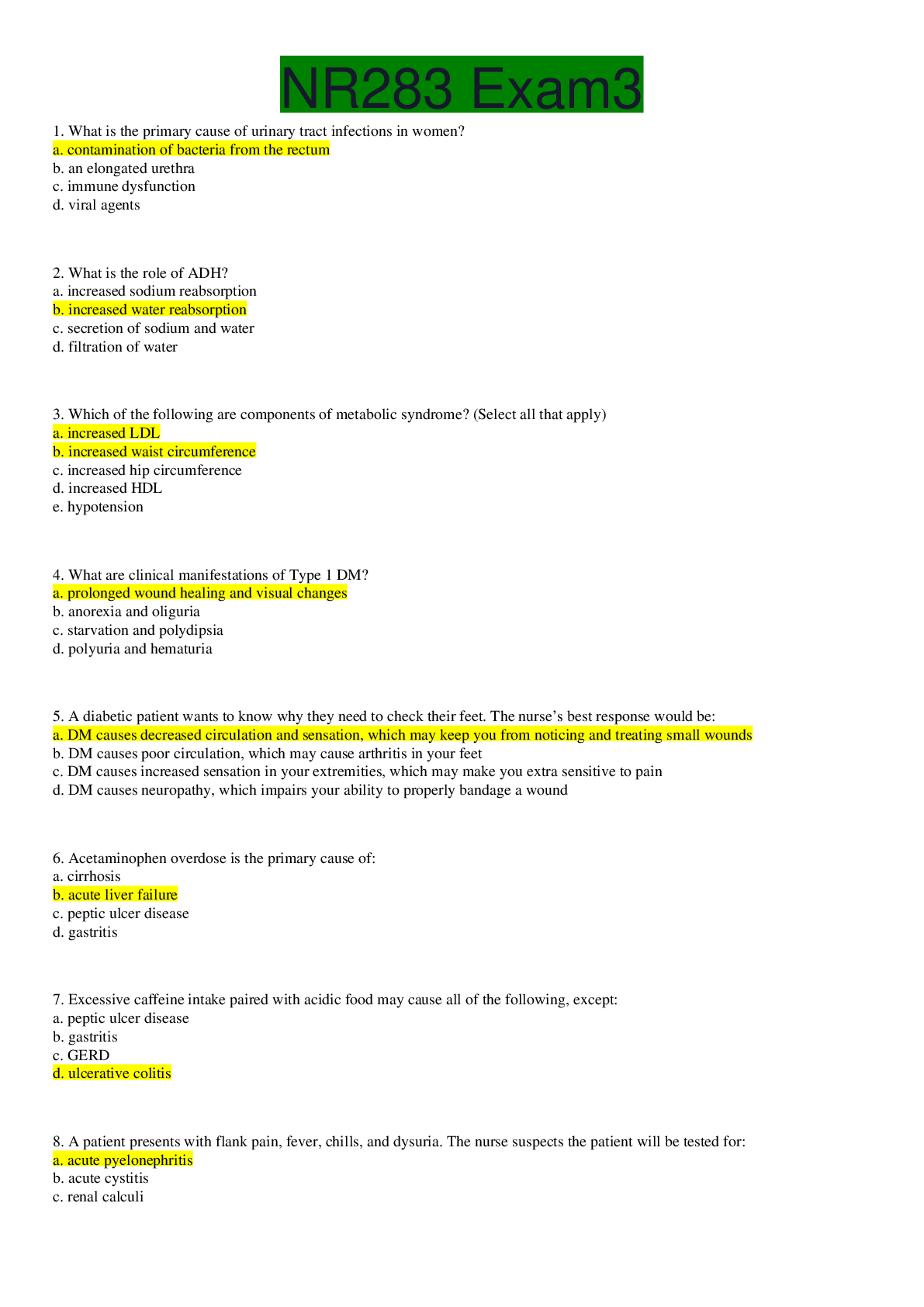

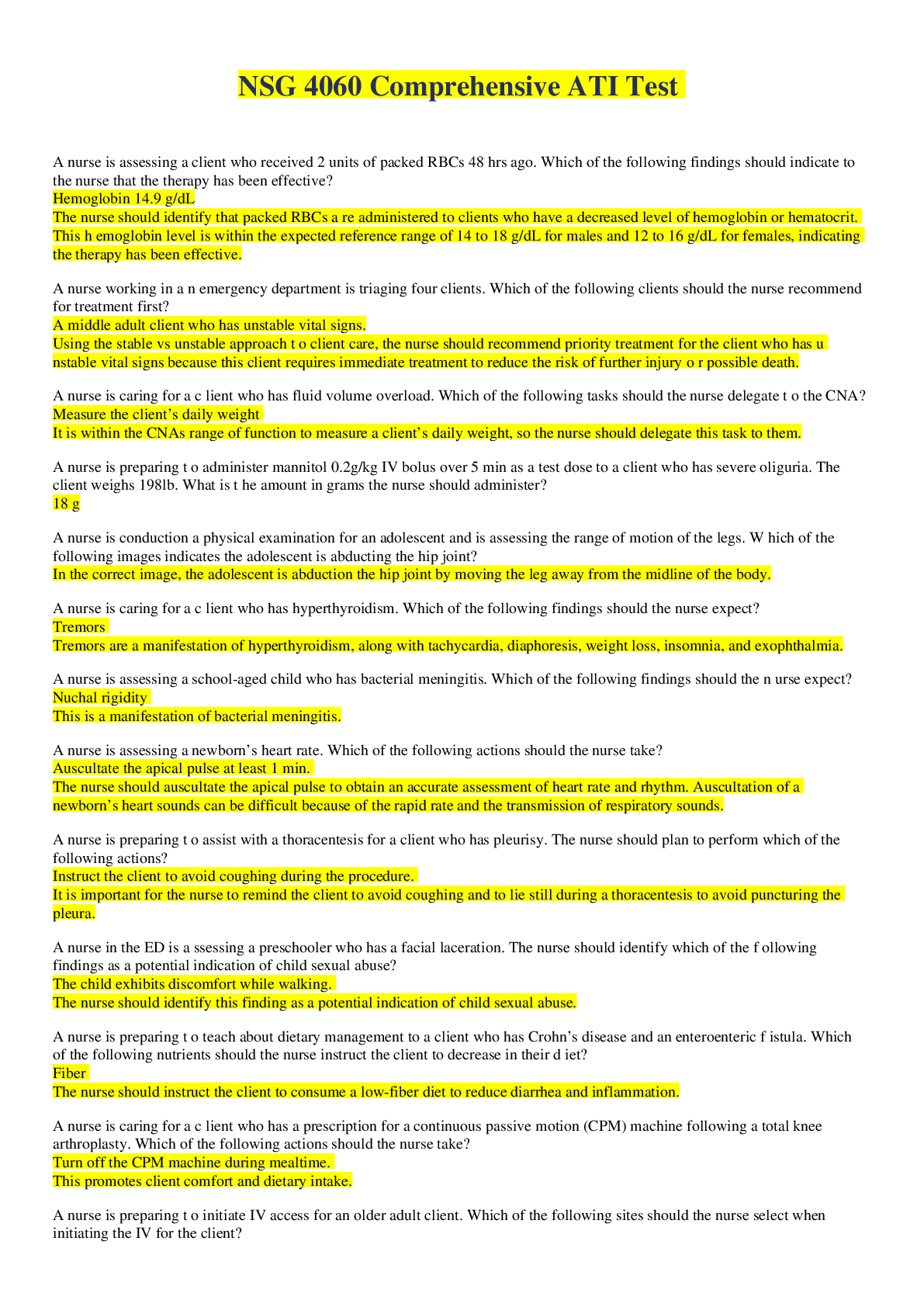

.png)


.png)

